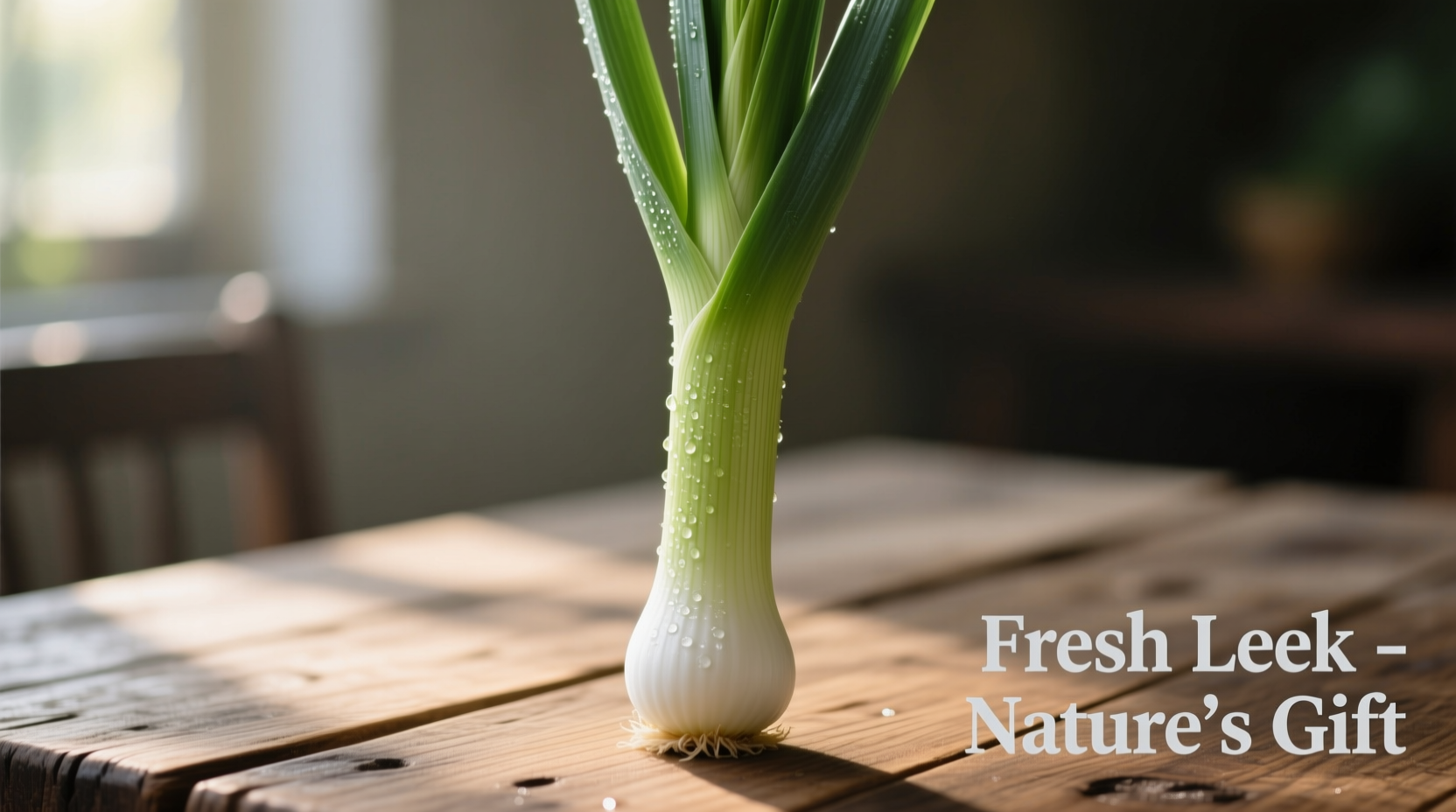Understanding Leeks: More Than Just a Pretty Vegetable
When searching for "leek veggie," you're likely confirming that leeks qualify as vegetables—and they absolutely do. These elegant members of the Allium family (alongside onions, garlic, and shallots) provide a delicate, sweet flavor profile that elevates dishes without overwhelming other ingredients. Unlike their sharper relatives, leeks deliver subtle complexity that professional chefs prize for building foundational flavors.
Why Leeks Deserve a Place in Your Kitchen
Leeks transform ordinary meals into extraordinary experiences through their unique flavor development. When properly prepared, they offer:
- A sweet, mild onion-like taste that mellows beautifully when cooked
- Distinct textural contrast between tender white bulbs and silky green leaves
- Remarkable versatility across cooking methods from sautéing to roasting
- Nutritional benefits that support heart health and digestion
Leek Varieties Compared: Finding Your Perfect Match
| Variety | Best For | Flavor Profile | Season |
|---|---|---|---|
| Elephant Leek | Grilling, roasting | Mildest, sweetest | Spring-Summer |
| King Richard | Soups, stocks | Classic leek flavor | Winter |
| Lincoln | All-purpose cooking | Balanced sweetness | Fall-Winter |
| Porbella | Raw applications | Most delicate | Year-round |
This comparison comes from the USDA Agricultural Research Service, which tracks vegetable varieties for culinary and nutritional characteristics. Understanding these differences helps you select the perfect leek for your specific recipe needs.
Nutritional Powerhouse: What Makes Leeks Special
According to the USDA FoodData Central, one cup of cooked leeks (96g) delivers:
- 32% of your daily vitamin K needs for blood health
- 18% of vitamin A for vision support
- 15% of manganese for metabolism regulation
- 3.4g of dietary fiber (14% of daily needs)
- Only 54 calories per serving
Unlike many vegetables, leeks maintain significant nutritional value whether raw or cooked. Their soluble fiber content actually increases when gently sautéed, making them more beneficial for digestive health than when consumed raw.

Selecting the Perfect Leeks: What Grocery Shoppers Need to Know
When choosing leeks at your local market, look for these quality indicators:
- Firm, crisp bulbs without soft spots or blemishes
- Vibrant green leaves that show no signs of yellowing
- Minimal soil between layers (excessive dirt indicates poor handling)
- Uniform diameter throughout the stalk for even cooking
Avoid leeks with flowering tops, as this indicates maturity that translates to tougher texture and stronger flavor. The ideal leek should feel heavy for its size, signaling proper hydration and freshness.
The Proper Way to Clean Leeks (Most People Get This Wrong)
Sand trapped between leek layers ruins otherwise perfect dishes. Follow this chef-recommended cleaning method:
- Cut off root end and dark green tops (reserve for stock)
- Slice vertically through the white and light green portion
- Submerge in cold water, separating layers to release dirt
- Swirl gently to dislodge trapped particles
- Rinse under running water, checking between all layers
- Pat dry with clean kitchen towel before cooking
This technique, verified by culinary experts at the National Institute of Food and Agriculture, ensures no gritty surprises in your finished dish while preserving the leek's delicate structure.
Cooking Techniques That Highlight Leek's Best Qualities
Leeks respond differently to various cooking methods. Understanding these reactions helps you achieve perfect results:
- Sautéing: Cook over medium heat for 8-10 minutes until translucent for soup bases
- Roasting: Toss with olive oil at 400°F for 20 minutes for caramelized sweetness
- Grilling: Brush with oil and grill whole for 5 minutes per side for smoky flavor
- Raw applications: Use only the pale green portions thinly sliced in salads
Professional chefs consistently recommend cooking leeks slowly to develop their natural sugars without burning. The white and light green portions offer the best texture for most cooked applications, while the darker greens work well in stocks and broths.
Storage Secrets for Maximum Freshness
Proper storage extends leek freshness significantly. Follow these guidelines:
- Store uncleaned leeks in the refrigerator's crisper drawer
- Wrap in slightly damp paper towel inside perforated plastic bag
- Keep away from ethylene-producing fruits like apples and bananas
- Use within 10-14 days for optimal flavor and texture
Cooked leeks maintain quality for 3-4 days when stored in airtight containers. For longer preservation, freeze blanched leeks for up to 6 months—though this reduces their crisp texture.
Common Leek Mistakes Home Cooks Make
Avoid these frequent errors that compromise your dishes:
- Discarding all green parts - The darker greens make excellent stock
- Overcooking - Leads to mushy texture and diminished flavor
- Improper cleaning - Results in gritty final dishes
- Using high heat - Causes burning before proper flavor development











 浙公网安备
33010002000092号
浙公网安备
33010002000092号 浙B2-20120091-4
浙B2-20120091-4